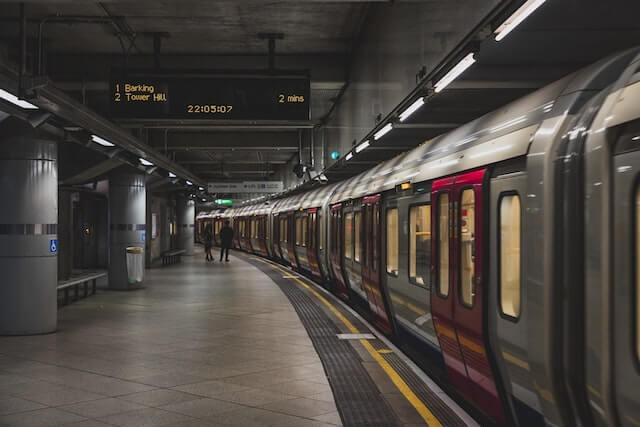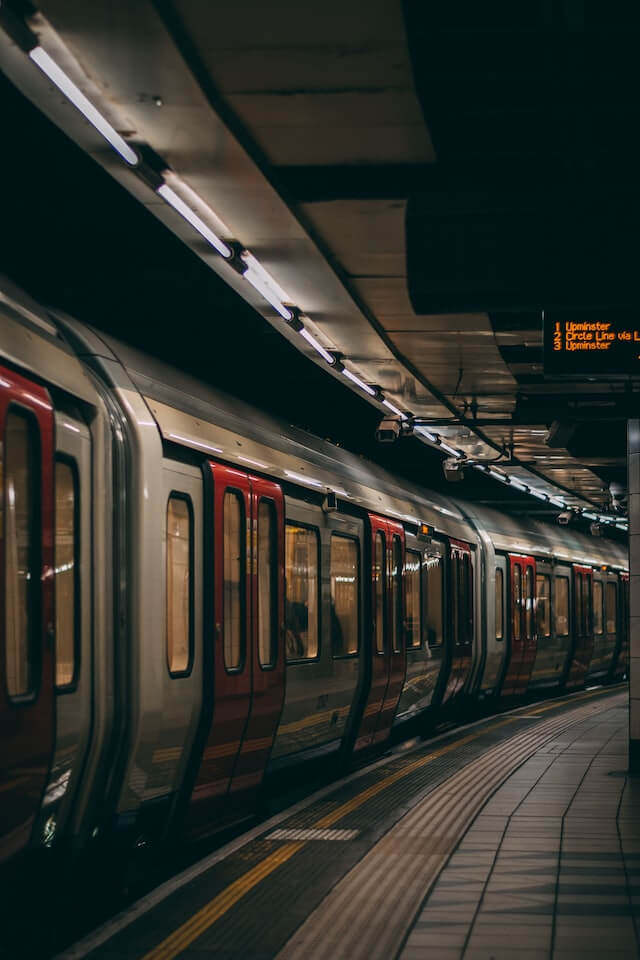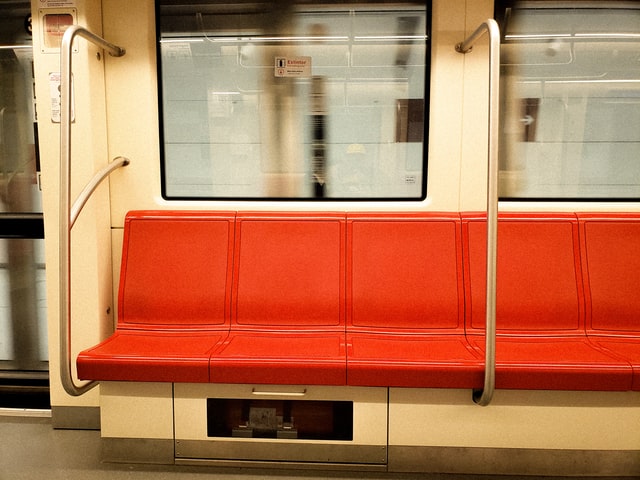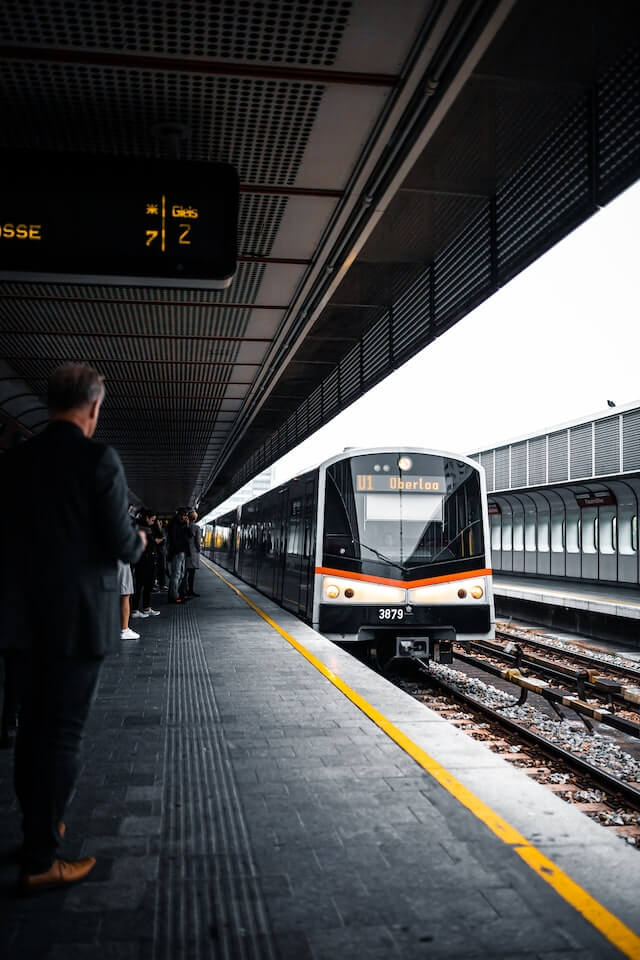Information on Hyderabad Metro | Problems | Railway lines | facts | Fare chart | Schedule | Facilities
The Hyderabad Metro is a fast transit system that serves the city of Hyderabad in the Indian state of Telangana. The Hyderabad Metro now has 56 stations that are open and running. Most people in India live in cities like Hyderabad, which is a big reason the country’s population is increasing. Consequently, there is more demand in the towns for a metro system.
Twin cities Hyderabad and Secunderabad worked together in 2003 to set up the Multi-Modal Transport System (MMTS), which runs as a commuter train between the two cities. The Hyderabad Metro is a mass rapid transit system in the city of Hyderabad. Hyderabad is the capital of the Indian state of Telangana, and the city is home to the Hyderabad Metro.
Even though Phase 1 of the system is still being built, plans are already being made for Phase 2, which would connect to Rajiv Gandhi International Airport.
Hyderabad Metro Rail Lines Information-
The Hyderabad Metro Rail is a public transportation company in Hyderabad that runs the Metro lines in the city.

The Hyderabad Metro is an urban Mass Rapid Transit System (MRTS) built to give people in Hyderabad, the state capital of Telangana, more ways to get around.
There are three different lines and 57 stops on the Hyderabad Metro Rail system.
The concessionaire for the 72-kilometer Phase 1 project of the Hyderabad Metro, L&T Metro Rail Hyderabad Limited (LTMRHL), started building in April 2012 using the Public-Private Partnership (PPP) model. They worked on the project until February 2020, when the whole Green Line opened simultaneously.
Their Metro lines go from Ranga Reddy in the north down to Ranga Reddy in the south, where they stop at L B Nagar. JNTU College is one of the places this route stops at.
Uppal is the most eastern station, and Miyapur is the most western.
Local protests in the Old City stopped the Green Line section of the Hyderabad Metro that would have connected MGBS and Falaknuma from ever being built. This section is five kilometers long, and phase 1 was cut short at 67 kilometers.
Problems
The problems with the system and general wear and tear over time have made it more important to have a metro system in cities. In 2003, the second stage of the Modal System, called “system planning,” began. People said that the Hyderabad Metro was an ambitious system that quickly grew to become a complete way to get around.

Currently, plans are being made for the 58-kilometer Phase 2 expansion of the Hyderabad Metro. The Detailed Project Report (DPR) for this project was given to the Telangana state government in February 2020 for approval. By the time construction starts in 2022, some of the routes inside it may have changed.
Different Hyderabad Metro Railway lines-
Red Line-
The Red Line goes from Miyapur to LB Nagar, stopping at MG Bus Station, Nampally, and Ameerpet along the way. The Red Line of the Hyderabad Metro goes through the middle of the city in a direction. That could be either northwest or southeast, going for about 29 kilometers and stopping at 27 places.
Metro Rail services are now available all over Hyderabad, and three interchange stations connect the three different rail lines in the city.
The Red Line is the name of one of the metro rail lines in Hyderabad and is part of the Hyderabad Metro, a fast transit system. It is run by Hyderabad Metro Rail and leaves from all of the metro stations in Hyderabad that are open.
The line runs on standard-gauge rails (1435 mm) and gets 25 kilovolts of alternating electricity from wires hanging above it. The trains can go as fast as 80 kilometers per hour, and the time between them can be anywhere from 4 to 10 minutes.

Green Line-
From JBS Parade Ground to MG Bus Station, the Green Line goes through Secunderabad. On the same day, both the Red Line and the Blue Line of the Hyderabad Metro opened. It goes 27 kilometers east to west, stopping at 23 stations. It connects important places like HITEC City and Secunderabad along the way.
From where the Green Line starts at the JBS Parade Ground to where it ends at the MG Bus Station, which is 16.6 km away, there are 15 stops. The Metro Red Line is a part of a partnership between the government and the business world. Along its route, the Green Line of the Hyderabad Metro has two stations where people can switch lines.
The standard gauge rails on the line are 1435 millimeters long, and the 25-kilovolt overhead catenary provides alternating electricity. Each train has three cars and can go as fast as 80 kilometers per hour. It takes between five and ten minutes for each pair of trains to pass each other.
Blue Line-
From Nagole to Raidurg, the Blue Line goes through Secunderabad and Ameerpet. The Hyderabad Metro Green Line is the city’s rapid transit system, and Hyderabad City is in the Indian state of Telangana.
The Blue Line is run by Hyderabad Metro Rail, and you can get on it at any of the metro stations that are open and running. This line goes from Nagole to Raidurg, 27 kilometers away, and has 23 stops along the way. Along the Blue Line of the Hyderabad Metro, two stations connect.
There are 15 stops on this route, which goes from Miyapur to LB Nagar and has a total length of 16.6 kilometers. The Hyderabad Metro Red Line was paid for by a partnership between the public and private sectors (PPP).
Lesser-known facts about the Hyderabad Metro-
- Hyderabad is serviced by the Hyderabad Metro, a rapid transit network in the Telangana state of India.
- The project was developed in the form of a public-private partnership, with the state government only owning a 10% stake.
- An extensive network of metro lines, including those in Ranga Reddy and Hyderabad, make up the Hyderabad Metro Rail.
- This project was named the best urban mass transportation project in India for 2018 by the federal government of India.
- The Hyderabad Metro Rail network is planned to run along three lines over an approximate total distance of close to 72 kilometers.
- Hyderabad Metro Rail (HMR) is mandated to enact various penalties under the Metro Act, including Ticketless Travel, Over Traveling, Overstaying Both Within and Beyond the Origin Station, and Overstaying Beyond the Station.
- The system is powered by 25 kV AC electricity delivered by overhead catenary on standard gauge (1435 mm) rails.
- The Hyderabad Metro Rail line that covers the most distance is C1-RED. Riders may go on this Metro line from Miyapur (Ranga Reddy) to L B Nagar (Ranga Reddy). It covers a distance of nearly 28 kilometers and has 27 different stations.
- This is India’s second-longest underground train system after the Delhi Metro.
- You may purchase a smart card or a token at any Metro station by visiting the ticket office or an Automatic Vending Machine (AVM). Tokens are less secure than smart cards.
- Using Regenerative Braking Technology (RBT) and running on Communication Based Train Control (CBTC) technology, an environmentally friendly, fully automated, best-in-class transportation framework will help reduce carbon footprints and overall pollution. This will be done by cutting down on pollution overall.

More related facts
- The Hyderabad Metro’s mascot, Niz, is designed to stand in for the Nizams.
- The Hyderabad Metro was named the winner of the prize for the Best Urban Mass Transit Project by the Indian government in November 2018.
- The C3-BLUE line is the one that is the shortest. This Metro line begins at Hitec City, and Raidurg is where it ends. It covers a distance of 2 kilometers while stopping twice.
- The Metro Rail Project was first suggested in 2003 by N. Chandrababu Naidu, the Chief Minister of the state of United Andhra Pradesh at the time.
- Service on the Hyderabad Metro Rail is accessible from all terminal stations between 6:00 and 22:00 on weekdays and weekends.
Fare chart for Hyderabad Metro Rail
Fares on the Hyderabad Metro are based not only on how far you travel but also on what kind of pass you buy. An RFID token for a single trip or a smart card is best for multiple trips.
When figuring out the fare for the Hyderabad Metro line, the type of ticket bought and the distance traveled are both considered.
Both are available for Rs. 20, and you can save up to 10% during certain times of the year. The most a user can load is Rs. 3,000, and they can load amounts in increments of Rs. 50. The card has to have at least ten rupees on it at all times.
The cheapest fare on the Red Line, the Blue Line, or the Green Line is 10 Indian Rupees.
The train ride from Nagole to the Stadium Metro Station costs 15 Indian Rupees. And, the train ride to the Ameerpet Metro Station costs 45 Indian Rupees. The train ride to the Raidurg Metro Station costs 60 Indian Rupees.
The most you can pay to ride the Red Line or the Blue Line is sixty Indian Rupees. Between now and then, the most you can pay for the Green Line is 35 INR.
Hyderabad Metro Rail Schedule-
Most people who work in IT companies in Hyderabad take the metro trains to get to and from work. This is because Hyderabad is one of the most developed cities in India. Most of the people who live there choose to take the metro train instead of driving to avoid traffic. Because of this, Hyderabad’s metro train times are crucial for people who live there full-time.
Do you want to know when the Hyderabad Metro Rail Metro will run? The Moovit app has information about all the Metro Rail lines and when they run. Moovit will give you helpful step-by-step directions for the Metro Rail routes you want to take.

At six in the morning, the Metro Rail starts running. At 10:15 p.m., the last train leaves all terminal stations, and service ends about an hour and fifteen minutes later.
The schedule for the metro train. It goes from Miyapur to LB Nagar on the Red Line. Every eight minutes, a metro train leaves, and on Sundays, the first train leaves at 7 a.m.
The following table shows the schedule for the Hyderabad metro train from Nagole to Raidurg on the Blue line. Every eight minutes, a metro train leaves, and on Sundays, the first train leaves at 7 a.m.
Facilities at Hyderabad Metro Station-
From the street to the platform level, metro stations have stairs, elevators, and escalators, making it easy and pleasant to get in and out. Also, the control panels inside the elevators are set up. So that they are easy for people of all ages and abilities to reach, including older people and people with disabilities.
All Metro trains are made with the needs of people with different levels of mobility, like the elderly and people with limited mobility, in mind. On the train, there are unique places for wheelchair users, older people, and women who are pregnant to sit.
The Hyderabad Metro is the first in the country to offer entertainment to train riders “in flight.” With this service, train riders can watch movies, play games, and listen to music, all at the touch of a button.
The infrastructure of the train:
The infrastructure of the Metro Station will have three levels: the street level, the concourse level, and the platform level.
Before the train leaves the station, a message that says “Doors closing” will appear on a screen. Above the train doors, passengers will hear announcements that the doors are about to close. After you get on the train, the train driver will close the doors and lock them behind you.

If you take the subway, you can also charge your phone there. The metro system has accessible stations for people of different physical abilities to use, and these stations have elevators, stairwells, and other amenities.
The station is easy to get to and has self-service ticket machines and a way to collect fares. Stations usually have several facilities, with restrooms and phones the most important.
The metro train cars have air conditioning to make the ride as comfortable as possible for the people inside. The beautiful look of the coaches comes from their high-end interiors, seats made for comfort, and lighting that uses less energy.
